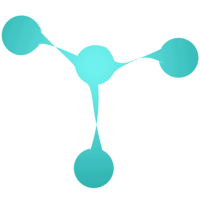Torch (machine learning)
 | |
| Original author(s) | Ronan Collobert, Samy Bengio, Johnny Mariéthoz[1] |
|---|---|
| Initial release | October 2002[1] |
| Final release | 7.0
/ February 27, 2017[2] |
| Repository | |
| Written in | BSD License |
| Website | torch |
Torch is an open-source machine learning library, a
torch
The core package of Torch is torch. It provides a flexible N-dimensional array or Tensor, which supports basic routines for indexing, slicing, transposing, type-casting, resizing, sharing storage and cloning. This object is used by most other packages and thus forms the core object of the library. The Tensor also supports mathematical operations like max, min, sum, statistical distributions like
The following exemplifies using torch via its
> a = torch.randn(3, 4)
> =a
-0.2381 -0.3401 -1.7844 -0.2615
0.1411 1.6249 0.1708 0.8299
-1.0434 2.2291 1.0525 0.8465
[torch.DoubleTensor of dimension 3x4]
> a[1][2]
-0.34010116549482
> a:narrow(1,1,2)
-0.2381 -0.3401 -1.7844 -0.2615
0.1411 1.6249 0.1708 0.8299
[torch.DoubleTensor of dimension 2x4]
> a:index(1, torch.LongTensor{1,2})
-0.2381 -0.3401 -1.7844 -0.2615
0.1411 1.6249 0.1708 0.8299
[torch.DoubleTensor of dimension 2x4]
> a:min()
-1.7844365427828
The torch package also simplifies object-oriented programming and serialization by providing various convenience functions which are used throughout its packages. The torch.class(classname, parentclass) function can be used to create object factories (classes). When the constructor is called, torch initializes and sets a Lua table with the user-defined metatable, which makes the table an object.
Objects created with the torch factory can also be serialized, as long as they do not contain references to objects that cannot be serialized, such as Lua coroutines, and Lua userdata. However, userdata can be serialized if it is wrapped by a table (or metatable) that provides read() and write() methods.
nn
The nn package is used for building neural networks. It is divided into modular objects that share a common Module interface. Modules have a forward() and backward() method that allow them to feedforward and backpropagate, respectively. Modules can be joined using module composites, like Sequential, Parallel and Concat to create complex task-tailored graphs. Simpler modules like Linear, Tanh and Max make up the basic component modules. This modular interface provides first-order automatic gradient differentiation. What follows is an example use-case for building a multilayer perceptron using Modules:
> mlp = nn.Sequential()
> mlp:add(nn.Linear(10, 25)) -- 10 input, 25 hidden units
> mlp:add(nn.Tanh()) -- some hyperbolic tangent transfer function
> mlp:add(nn.Linear(25, 1)) -- 1 output
> =mlp:forward(torch.randn(10))
-0.1815
[torch.Tensor of dimension 1]
MSECriterion and the cross-entropyClassNLLCriterion. What follows is an example of a Lua function that can be iteratively called to train
an mlp Module on input Tensor x, target Tensor y with a scalar learningRate:
function gradUpdate(mlp, x, y, learningRate)
local criterion = nn.ClassNLLCriterion()
local pred = mlp:forward(x)
local err = criterion:forward(pred, y);
mlp:zeroGradParameters();
local t = criterion:backward(pred, y);
mlp:backward(x, t);
mlp:updateParameters(learningRate);
end
It also has StochasticGradient class for training a neural network using Stochastic gradient descent, although the optim package provides much more options in this respect, like momentum and weight decay regularization.
Other packages
Many packages other than the above official packages are used with Torch. These are listed in the torch cheatsheet.[6] These extra packages provide a wide range of utilities such as parallelism, asynchronous input/output, image processing, and so on. They can be installed with LuaRocks, the Lua package manager which is also included with the Torch distribution.
Applications
Torch is used by the Facebook
Facebook has released a set of extension modules as open source software.[14]
See also
References
- ^ CiteSeerX 10.1.1.8.9850.
- ^ Collobert, Ronan. "Torch7". GitHub.
- ^ "Torch7: A Matlab-like Environment for Machine Learning" (PDF). Neural Information Processing Systems. 2011.
- ^ Torch GitHub repository ReadMe
- ^ PyTorch GitHub repository
- ^ "Cheatsheet · torch/torch7 Wiki". GitHub.
- ^ KDnuggets Interview with Yann LeCun, Deep Learning Expert, Director of Facebook AI Lab
- ^ Hacker News
- ^ Yann Lecun's Facebook Page
- ^ IDIAP Research Institute : Torch
- ^ Torch-android GitHub repository
- ^ Torch-ios GitHub repository
- ^ NeuFlow: A Runtime Reconfigurable Dataflow Processor for Vision
- Wired. 16 January 2015.
